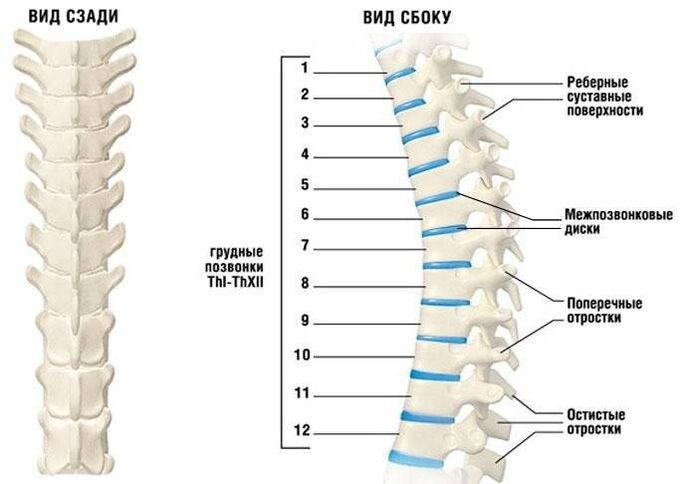Currently, according to medical statistics, almost everyone over 25 to 30 complains about the symptoms of cervical osteochondrosis.The disease affects this spine more often than others.Pathology is a progressive degenerative process that affects intervertebral discs and vertebrae located in the neck.The disease is common among equal men and women.This is a dangerous and complex form of osteochondrosis, as large blood vessels that provide the brain and a large number of nerve endings are located in the neck.Innervation and blood flow violations lead to a deterioration in the brain for oxygen and nutrients.

Signs of the disease
The symptoms of cervical spine osteochondrosis are more pronounced than in other parts of the spine spine, even with minor damage.This is due to the fact that around the neck the vertebrae are located close to each other, and the intervertebral discs have a small height.This anatomical feature contributes to the fact that with osteochondrosis, nerve endings, spinal cord and blood vessels are more often compressed.
General Symptoms:
- pain syndrome;
- weakness and decreased sensitivity at the upper ends;
- restriction of neck mobility;
- Violations of the Movement Coordination;
- frequent dizziness;
- General weakness;
- Deterioration of the functioning of the organs of perception (hearing, vision, touch, taste).
The pains are more often located in the neck, give them to the back of the head, shoulders, arms.The upper limbs hurt if the nervous spine is compressed by the damaged vertebra, responsible for its innervation.Pain in the back of the head is due to the spastic contractions of the neck muscles attached to the occipital bones and the violation of blood circulation in this area.
Hand weakness is observed in patients if the nerve spine is involved in the pathological process that ensures innervation of the upper limb muscle structures.Restoration of mobility and a characteristic crisis when the neck is rotated or inclined, if bone growths appear in cervical vertebrae, the height of the intervertebral discs is reduced, the locked joints between the vertebrae are affected.
The vertebrae in the neck have transverse processes that form a channel in which the artery that feeds the brain runs.With cervical spine osteochondrosis, the vertebrae are displaced, connective tissue is growing in them.This leads to compression of the cervical artery, a deterioration in the blood supply to the cerebellum and the back of the brain.As a result, a person has frequent dizziness, movement coordination, general weakness is disturbed.In advanced cases, if the artery is involved in the pathological process or strongly pushed, the cerebellum blood supply, the occipital part and the brain trunk get worse significantly.In this case, the functionality of the organs of hearing and vision, the numbness of the tongue and fingers is reduced.
The signs of the disease depend on which of the eight vertebrae is affected by a dystrophic or inflammatory process.Sensitivity and movement disorders lead to damage to cephalorean roots in which certain vertebrae affect.Depending on this, the following manifestations of cervical osteochondrosis are observed:

- The first vertebra - the neck and the occipital part of the head are numb, its sensitivity decreases;
- The second - pain in the crown and nape is felt;
- The third - the pain is felt and the sensitivity is reduced in that part of the neck where the squeezed spine is localized, the intensity of the taste sensations is reduced and the speech deficiencies are present;
- Fourth pain radiates on the shoulder, scapula, the patient is disturbed by heart pain, breathing disorders and the tone of the neck muscles decreases;
- Fifth - The pain is observed in the neck, given to the external surface of the shoulder;
- Sixth - neck pain is radiated in the shoulder blade, felt in the forearm and thumbs;
- Seventh - the pain is given to the shoulder blade, the back of the shoulder, the forearm and the fingers (from the second to the room);
- The eighth - the pain spread from the neck to the shoulders, forearms and little finger.
Depending on the prevalence of the lesion, four degrees of cervical spine osteochondrosis differ.This is not the stage of the disease, but the severity of symptoms, due to how common the pathological process is, which vertebrae affects.
- In the first degree, clinical symptoms are absent or manifested minimally.Patients complain of a slight pain, intensifying during head movements.The treatment started at this stage of the disease will be effective.However, people usually ignore the disturbing symptoms or do not feel them, so do not consult a doctor.
- The worsening of the pathological process increases the symptoms.In the second stage, the pain becomes more pronounced, give to the upper limbs, Omplates.At this stage in the development of the degenerative process, the height of the intervertebral disc is reduced as a result of which nerve fiber is compressed.This becomes the cause of increased pain.The second degree of osteochondrosis in the cervical region is characterized by the appearance of headaches, a deterioration in the well -being, a decrease in working capacity.
- The third degree of cervical osteochondrosis is distinguished by the formation of an affected intervertebral disc hernia.Neck mobility is limited, with palpation the patient feels intense pain.With this propagation of the pathological process, the pain becomes constant, radiating to the upper limbs.The tension of muscles linked to occipital bones is felt.Patients complain of frequent dizziness, general weakness, numbness of the hands.
- The fourth degree of cervical osteochondrosis is diagnosed when the intervertebral disc is completely destroyed by a dystrophic process.It is replaced by fibrous tissue, which leads to a significant limitation of mobility.The spinal cord and blood vessels flying in the neck are affected.Such changes are characterized by significant deterioration in the blood supply to the cerebellum and the ocipital of the brain.Oxygen hunger leads to a violation of movement coordination, hearing impairment, vision, language, speech disorders.
Treatment Methods
The timely search for a doctor when the first alarming symptoms appear, unpleasant neck sensations, the nervous system reaction will prevent the progression of degenerative changes.The treatment of cervical osteochondrosis consists of a complex of therapeutic measures.Among them:
- take medications;
- massage;
- Physical Education of Physiotherapy;
- Physiotherapeutic procedures.
Drug therapy
Doctors prescribe anti -inflammatory drugs to reduce pain intensity, reduce the inflammatory process and swelling of the nerve spine.Condroprotectors restore damaged cartilage fabric on the intervertebral disc.The muslaxers relax the neck muscles, relieve spasm.Drugs to improve blood flow help resume blood supply impaired to the brain.Vitamins B activate metabolism in nerve tissues.With intense pain, the doctor can prescribe analgesic medications.If the patient has a pronounced pain syndrome, the painkillers will be inserted to their parents, after the pain is decreased, they move to the tablets.
Physiotherapeutic Methods
Physiotherapy is an effective way to combat osteochondrosis in the cervical region.It is imperative to treat this disease using these techniques, after which the following results are achieved:
- The intensity of the pain decreases;
- Restoration of the affected bone, cartilage and muscle tissues is activated;
- Spasm and tension in the muscles are removed;
- An inflammatory process is interrupted;
- The delivery of oxygen and nutrients in the affected area and the brain improves.
The most effective in the treatment of osteochondrosis are the following types of procedures:
- The electrophoresis of medicines (the affected area acts with electric shock, which, in addition to activating blood flow and restoration of tissues, improves the delivery of the drug acting to tissues affected by the degenerative process);
- Ultrasound therapy (metabolic processes in the sick area are activated, pain decreases, inflammation is interrupted);
- Magnetotherapy (relieves swelling of the affected area, which helps reduce pain intensity);
- Laser therapy (improves blood circulation in the pathological process, has an anti -inflammatory effect).
Medical Physical Education
The exercises are prescribed during the period when acute manifestations of the disease are interrupted.During gymnastics, it should not be felt discomfort and pain.The complex should be performed after persistent remission to prevent relapse.

- Take a position lying on the stomach, lift your head and body, leaning on your hands.The back is straight, the breath is deep and uniform.Stay in one position for a minute or two and then slowly take the starting position.The number of repetitions is 3.
- The position is lying in the stomach, hands along the body.Turn your head slowly, trying to touch your ear on the floor.Repeat 6 times on each side.
- Sitting or standing, lean your head into an inhalation, trying to reach the chin in the chest.In exhalation, take your head gently, lifting your eyes to the ceiling.The number of repetitions is 10-15.
- A good exercise to strengthen the cervical muscles is to press the forehead against the pressed hands.To achieve the effect, you need to press your palms on your forehead and forehead in the palm of your hand for 30 seconds.Repeat three times.
- Rotate your head in a circle.Do the exercise slowly, gently.In each direction - 10 revolutions each.The occurrence of dizziness during movements is unacceptable.If this happens, you should stop immediately.
Massage
The course is prescribed by a doctor during the absence of acute pain, only one medical education specialist can conduct it.With this disease, it is not recommended to contact non -professional.
Therapeutic effects of collar massage:
- Blood flow and lymphony in the affected area improve;
- The muscles relax, the spasm is removed;
- The intensity of the pain decreases.
Surgical intervention
The operation is shown if conservative therapy does not bring results within six months, the patient is tormented by intense pain, signs of damage to nerve fibers and myelopathy are observed.If cervical osteochondrosis continues with complications, there is a threat of stroke, there is a strong tightening of the spinal cord, then the operation is required.
According to the nominations, they use the following types of surgical interventions:
- Endoscopic dyscoctomy - part removal or an entire intervertebral disc;
- Laminotomy - excision of bone ligaments and particles covered in bone tissue use (usually combined with laminoplasty - the establishment of artificial plaques to expand the spinal canal);
- Laser vaporization of the core of the disc - the core break of the intervertebral disc with a laser beam simultaneously with the destruction of its destroyed fragments;
- Cold kites nucleoplasty -Once an endoscope, a long, thin hollow needle is used, which is introduced to the intervertebral disc, an electrode that has a cold effect is delivered through it at the place of destruction.
The neck is a complex organ in which large blood vessels, the spinal cord passes.They are easy to damage, so they resort to surgery in no more than 5% of cases.Surgical treatment is often accompanied by the development of complications.Among them:
- inflammatory process in spinal cord tissues or membranes;
- osteomyelitis;
- The formation of scars leading to a narrowing of arterial and spinal canals.
Cervical spine operations are complex and require a long rehab.Patient restoration after surgery takes a period of six months or more.
Prevention
To avoid the development of cervical osteochondrosis, it is necessary:
- Monitor the position of the spine and neck;
- Bring an active lifestyle, move more;
- When exercising, care must be taken, observing the correction of execution, since even minor injuries can affect the condition of the musculoskeletal system;
- Take care of the correct body position during sleep, buy an orthopedic or anatomical mattress;
- Team correctly a workplace where a person spends a lot of time;
- get involved regularly in physical culture;
- Monitor the diet, ensure the receipt of all useful minerals needed for the bone fortress, especially magnesium and calcium;
- They constantly undergo exams of dispensaries for the timely detection of osteochondrosis.
Prevention will help prevent degenerative changes in the cervical spine, protects from pain, dizziness, limb numbness and other unpleasant symptoms.

















































